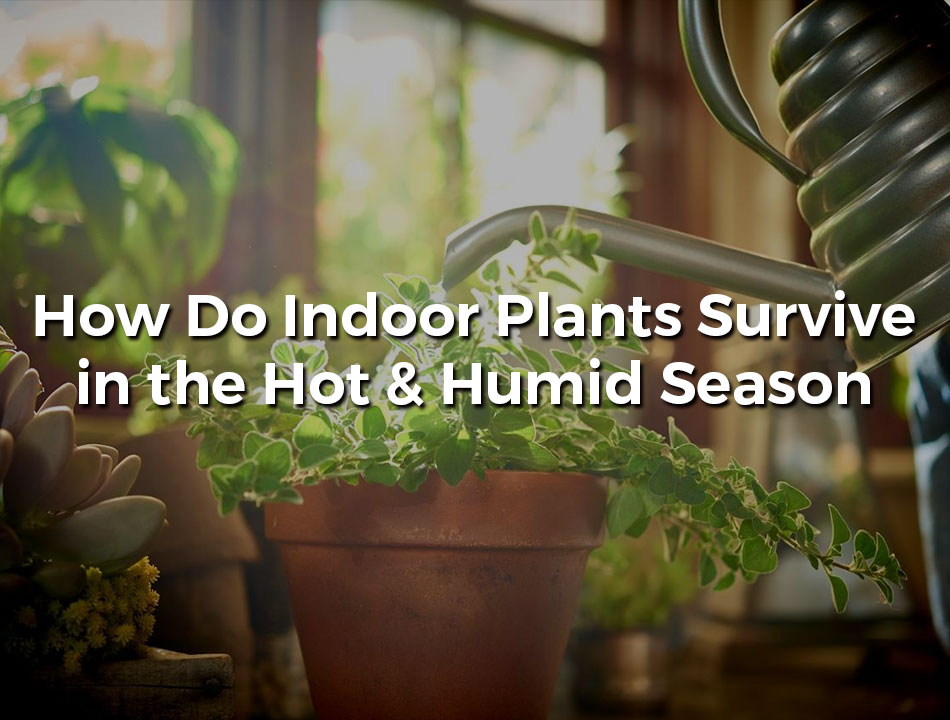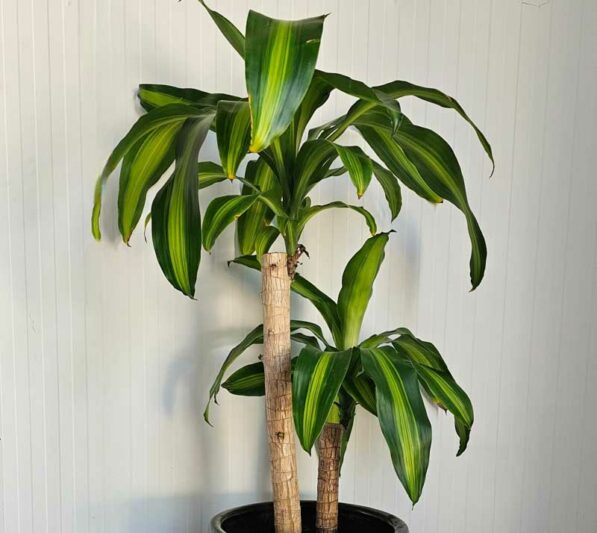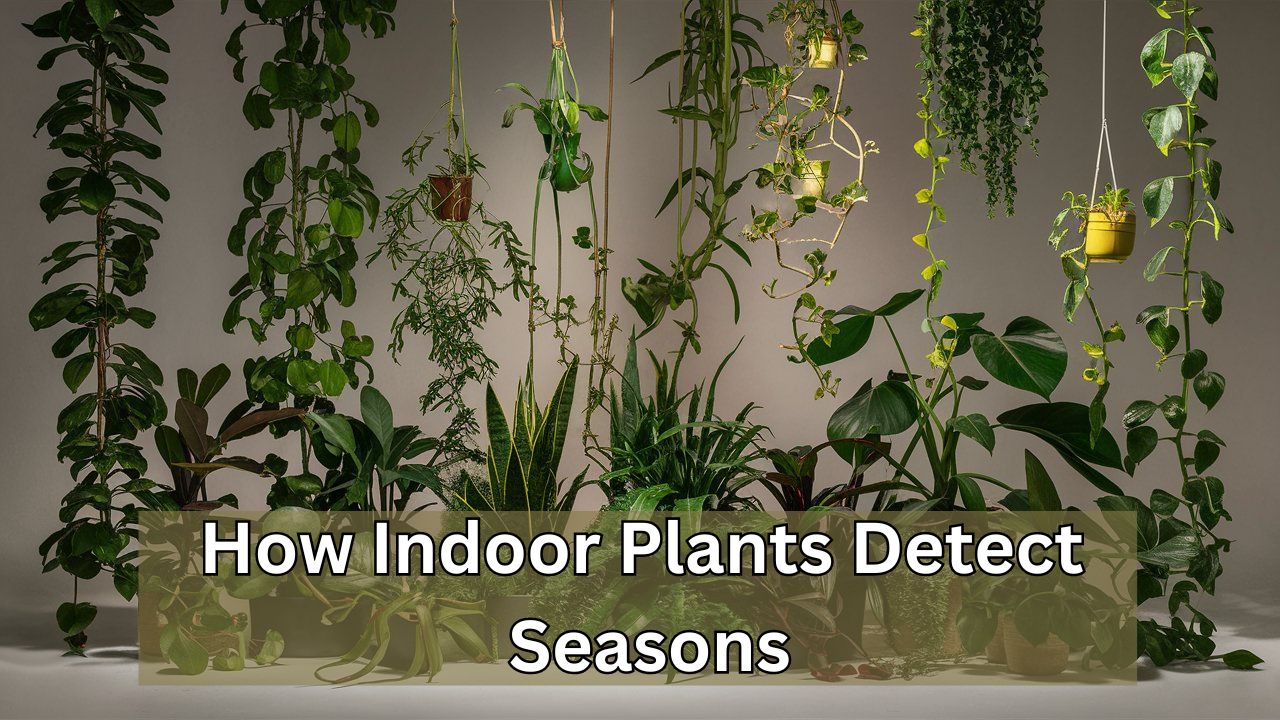Indoor plants sense the changing seasons through variations in light, temperature, and humidity. These factors trigger their growth and dormancy cycles.
Indoor plants, just like their outdoor counterparts, are sensitive to environmental changes. They rely on cues from their surroundings to adapt to different seasons. Light levels, temperature fluctuations, and humidity changes are primary indicators. During shorter days and cooler temperatures, plants might enter dormancy.
Increased light and warmth in spring stimulate growth. Proper care, like adjusting watering schedules and ensuring adequate light, helps indoor plants thrive year-round. By understanding these natural signals, you can better support your indoor garden’s health and vitality. This knowledge ensures that your plants remain vibrant and resilient through all seasons.
Introduction To Plant Circadian Rhythms
Indoor plants have a fascinating way of sensing the seasons. This ability lies in their circadian rhythms. These rhythms help plants manage daily and seasonal changes.
Internal Clocks In Flora
Plants possess internal clocks, much like humans. These clocks help them adapt to the environment. They regulate activities like photosynthesis and flowering.
Plants use these internal clocks to sense day and night. They also detect changes in light and temperature. This process is crucial for their survival.
Circadian Rhythms And Seasonal Changes
Plants adjust their circadian rhythms according to the season. During longer days, they grow faster. In shorter days, they conserve energy.
These adjustments help plants thrive indoors. They can sense light patterns from windows or artificial light. This ability makes them resilient and adaptable.
| Season | Plant Behavior |
|---|---|
| Spring | Rapid growth and flowering |
| Summer | Peak photosynthesis and energy storage |
| Autumn | Slower growth, preparation for rest |
| Winter | Minimal growth, conserving resources |
- Plants use light and temperature to adjust their rhythms.
- They have internal clocks that guide their activities.
- Circadian rhythms help plants adapt to indoor environments.
The Science Of Photoperiodism
Photoperiodism is how plants know the season. They sense the length of day and night. This process helps plants know when to flower or grow. Understanding this science can help you care for indoor plants better.
Light Quality And Duration
Light quality affects plant growth. Plants use different types of light. Blue light helps them grow strong stems and leaves. Red light makes them flower. The duration of light is also key. Plants need a certain amount of light each day. Long days make some plants flower. Short days make others bloom.
| Type of Light | Effect on Plant |
|---|---|
| Blue Light | Strong stems and leaves |
| Red Light | Flowering |
Photoreceptors And Their Role
Photoreceptors are special cells in plants. These cells sense light. They tell the plant how long the day and night are. There are two main types of photoreceptors: phytochromes and cryptochromes.
- Phytochromes: Detect red and far-red light
- Cryptochromes: Detect blue light
Phytochromes help plants know when to flower. Cryptochromes help them grow leaves and stems. These photoreceptors send signals to the plant. The plant then decides what to do. This process helps indoor plants adapt to the seasons.
Temperature’s Influence On Indoor Plants
Indoor plants experience seasonal changes due to varying temperatures. These changes affect their growth and development. Understanding the influence of temperature helps in providing the best care.
Vernalization And Its Effects
Vernalization is the process where plants need cold periods to flower. This cold treatment helps plants know when spring is coming. Without vernalization, some plants may not flower at all.
Plants like tulips and daffodils need vernalization. They store energy during the cold months. Once it warms up, they use this energy to bloom beautifully. Indoor environments can mimic these cold periods.
Use refrigerators or cool basements to vernalize indoor plants. Keeping them in cooler temperatures for a few weeks can help. This will encourage healthy growth and vibrant blooms.
Thermoperiodism And Growth
Thermoperiodism refers to how plants respond to day and night temperatures. Plants grow better with a temperature difference between day and night. This natural cycle helps regulate their growth hormones.
Many indoor plants thrive with a slight drop in night temperature. For example, keeping your home cooler at night can benefit plants like orchids and ferns. They will grow stronger and healthier.
Maintaining consistent temperature cycles can be challenging indoors. Use programmable thermostats to manage day and night temperatures. This will help simulate natural conditions for your plants.
| Plant Type | Day Temperature | Night Temperature |
|---|---|---|
| Orchids | 70-80°F | 60-65°F |
| Ferns | 65-75°F | 55-60°F |
| Tulips | 60-65°F | 45-50°F |
Understanding temperature’s influence on indoor plants is crucial. This knowledge ensures they thrive throughout the year.

Credit: marshydroth.com
Humidity And Seasonal Detection
Indoor plants can sense the changing seasons even indoors. Humidity plays a key role in this process. As seasons change, humidity levels vary, providing clues to plants.
Moisture Levels As Indicators
Plants are sensitive to moisture levels in the air. During spring and summer, the air is often more humid. In autumn and winter, the air becomes drier. Plants detect these changes and adjust their growth patterns.
For example, some plants may grow faster in higher humidity. Others may conserve water during drier months. This ability helps them survive in different conditions.
Adaptation To Indoor Environments
Indoor plants adapt to their surroundings. They learn to detect seasonal changes even inside your home. Using humidity, they can tell what season it is. This adaptation is crucial for their survival.
Here’s how they do it:
- Light Changes: Indoor light levels change with seasons. Plants sense these shifts.
- Temperature Variations: Indoor temperatures can vary. Plants adapt to these changes.
- Watering Patterns: Your watering habits may change with seasons. Plants notice this.
Understanding these adaptations helps you care for your indoor plants better. Keep an eye on humidity and other factors. Your plants will thank you!
Plant Hormones And Seasonal Changes
Indoor plants rely on hormones to understand seasonal changes. These hormones guide their growth and behavior throughout the year. Let’s explore how they work.
Auxins And Seasonal Growth
Auxins are crucial for plant growth. They help plants grow towards light. During spring and summer, auxins increase. This helps plants grow taller and produce new leaves.
In autumn and winter, auxin levels drop. This slows down growth. Plants conserve energy during these colder months. They prepare for the next growing season.
Abscisic Acid In Dormancy
Abscisic acid (ABA) is another important hormone. It helps plants enter dormancy during winter. ABA levels rise when daylight decreases and temperatures drop.
Higher ABA levels signal plants to stop growing. This prevents damage from cold weather. Dormancy helps plants survive until spring returns.
| Hormone | Role |
|---|---|
| Auxins | Promote growth during spring and summer |
| Abscisic Acid | Induce dormancy during autumn and winter |
Understanding these hormones helps in caring for indoor plants. Knowing their needs during different seasons ensures healthy growth year-round.
Biological Clocks And Gene Expression
Indoor plants have amazing ways to sense seasons. They use biological clocks and gene expression to do this. These mechanisms help plants adapt to seasonal changes.
Clock And Co Genes
Plants have special genes called CLOCK genes and CO genes. These genes help them sense time. The CLOCK genes keep track of day and night cycles. The CO genes help the plant know the length of the day.
During different seasons, the length of daylight changes. The CO genes sense this change. They send signals to the plant to adjust its growth.
Gene Regulation Throughout Seasons
The regulation of genes changes with seasons. Plants use signals to turn genes on or off. This process is known as gene regulation.
| Season | Gene Activity |
|---|---|
| Spring | Growth genes are active |
| Summer | Flowering genes are active |
| Fall | Preparation for dormancy |
| Winter | Dormancy genes are active |
The plant’s biological clock and gene expression ensure it survives. These mechanisms help indoor plants thrive in any season.
The Role Of Soil And Nutrients
Indoor plants sense seasons through soil composition and nutrient availability. This blog explores how soil and nutrients impact seasonal changes in indoor plants.
Soil Composition Variation
Soil composition changes with seasons. Winter soil can be denser and retain water. Summer soil is often drier and looser.
Plants detect these changes. Soil texture helps plants know the season. For example, denser soil signals winter. It means less water and nutrients.
Plants adapt by changing growth patterns. They may grow slower in denser soil. In looser soil, they grow faster. This seasonal soil change helps plants survive.
Nutrient Uptake Timing
Nutrient availability also changes with seasons. Plants need different nutrients at different times. In spring, plants need more nitrogen. In winter, they need less.
Plants sense these changes through roots. Roots uptake nutrients based on soil conditions. This nutrient timing helps plants prepare for each season.
For example, in spring, plants absorb more nitrogen. This helps them grow new leaves. In winter, they absorb fewer nutrients. This conserves energy and resources.
Nutrient uptake also signals the plant’s internal clock. It tells the plant what season it is. This helps plants adjust their growth and development.
| Season | Soil Composition | Nutrient Needs |
|---|---|---|
| Winter | Dense, retains water | Low nitrogen |
| Spring | Moist, balanced | High nitrogen |
| Summer | Dry, loose | Moderate nutrients |
| Fall | Varied, preparing for winter | Moderate to low nutrients |
- Soil density signals seasonal changes.
- Nutrient availability affects plant growth.
- Roots sense soil and nutrient changes.

Credit: www.gardenia.net
Practical Tips For Indoor Gardeners
Indoor plants often rely on natural cues to understand the seasons. To help your plants thrive, it’s important to mimic these natural conditions. Below are some practical tips for indoor gardeners.
Mimicking Natural Seasons
Creating a natural environment indoors can be simple. Follow these steps to simulate the changing seasons:
- Lighting: Use grow lights to mimic daylight hours. Adjust the duration to match the season. Increase light in spring and summer, decrease in fall and winter.
- Temperature: Regulate room temperature. Keep it warmer in summer and cooler in winter. Avoid sudden changes to prevent plant stress.
- Humidity: Use a humidifier to replicate seasonal humidity. Higher humidity in summer, lower in winter.
- Airflow: Use fans to simulate outdoor breezes. This helps plants breathe and strengthen their stems.
Adjusting Care With Seasonal Cues
Each season requires different care routines. Adjust your plant care based on these cues:
- Watering: Water more frequently in spring and summer. Reduce watering in fall and winter to prevent root rot.
- Fertilizing: Fertilize during the growing season (spring and summer). Use a balanced, water-soluble fertilizer. Stop fertilizing in fall and winter.
- Pruning: Prune dead or yellowing leaves in spring. This encourages new growth. Avoid heavy pruning in winter, as plants are dormant.
- Repotting: Repot plants in spring when they start growing. Choose a pot that’s one size larger than the current one.
Using these practical tips, you can create a thriving indoor garden that responds well to the changing seasons.
Frequently Asked Questions
How Do Indoor Plants Know What Time Of Year It Is?
Indoor plants sense the time of year through changes in light, temperature, and humidity. These environmental cues influence their growth cycles.
How Do Houseplants Know Their Winter?
Houseplants sense winter through changes in light, temperature, and humidity. Shorter days and cooler temperatures trigger dormancy.
Do Seasons Matter For Indoor Plants?
Yes, seasons matter for indoor plants. Growth rates and care needs change with seasonal light and temperature variations. Adjust watering, fertilizing, and placement accordingly.
Do Indoor Plants Know Their Spring?
Indoor plants sense spring through light changes and temperature. They adjust growth patterns and blooming cycles accordingly.
Conclusion
Indoor plants sense seasonal changes through light, temperature, and humidity. They adapt their growth accordingly. Understanding this helps you care for them better. Ensure optimal conditions for each season. Happy plants lead to a vibrant home. Keep observing and adjusting to support their natural cycles.
Your plants will thrive year-round.

My mission is to help you bring the beauty of nature indoors with expert advice, detailed plant care guides, and creative design ideas.




